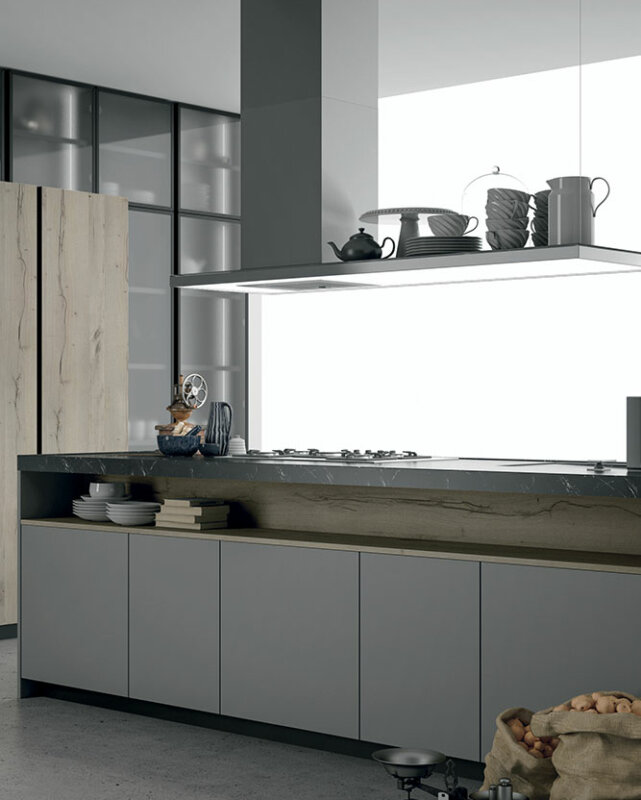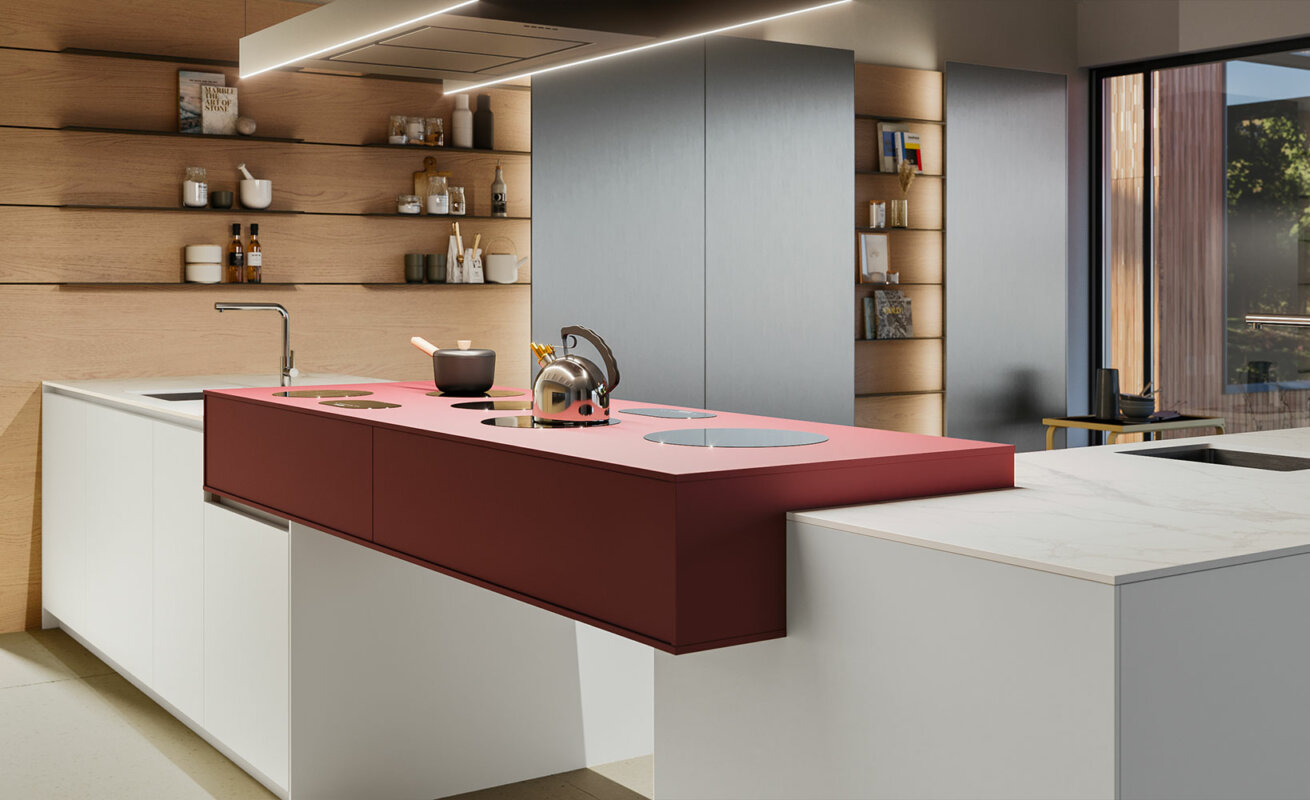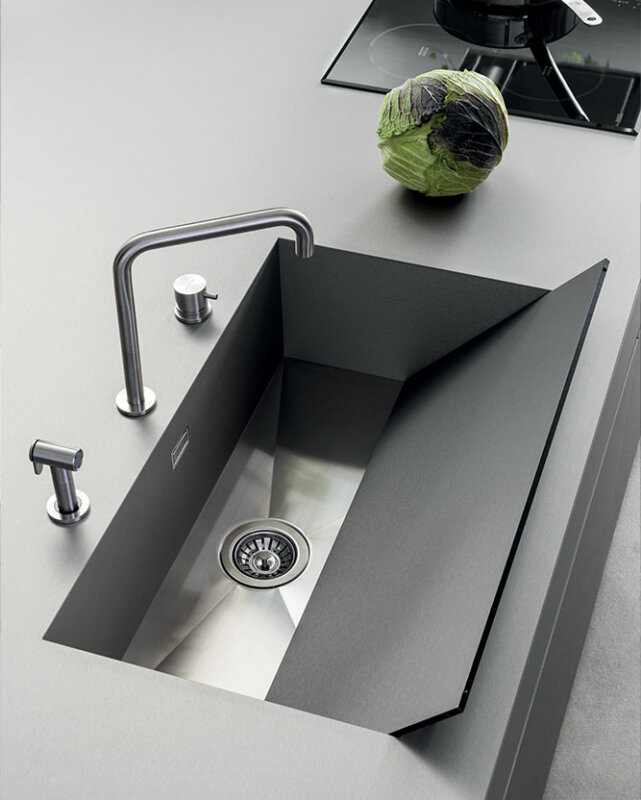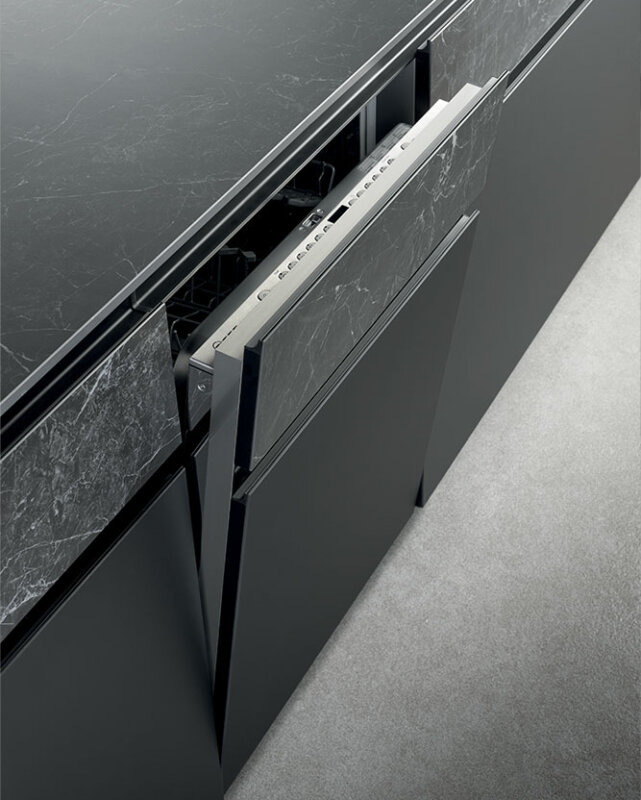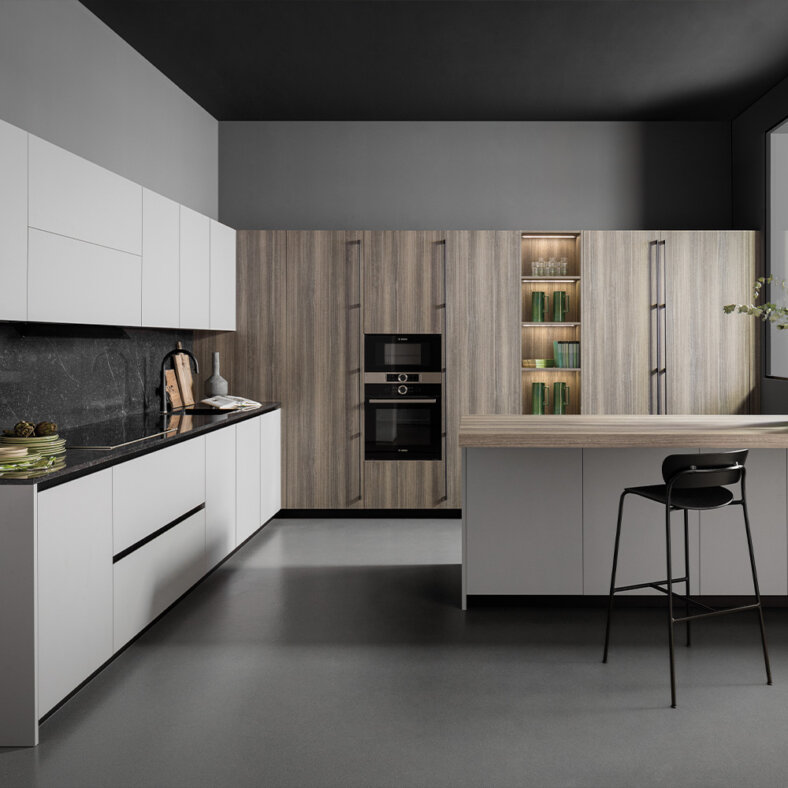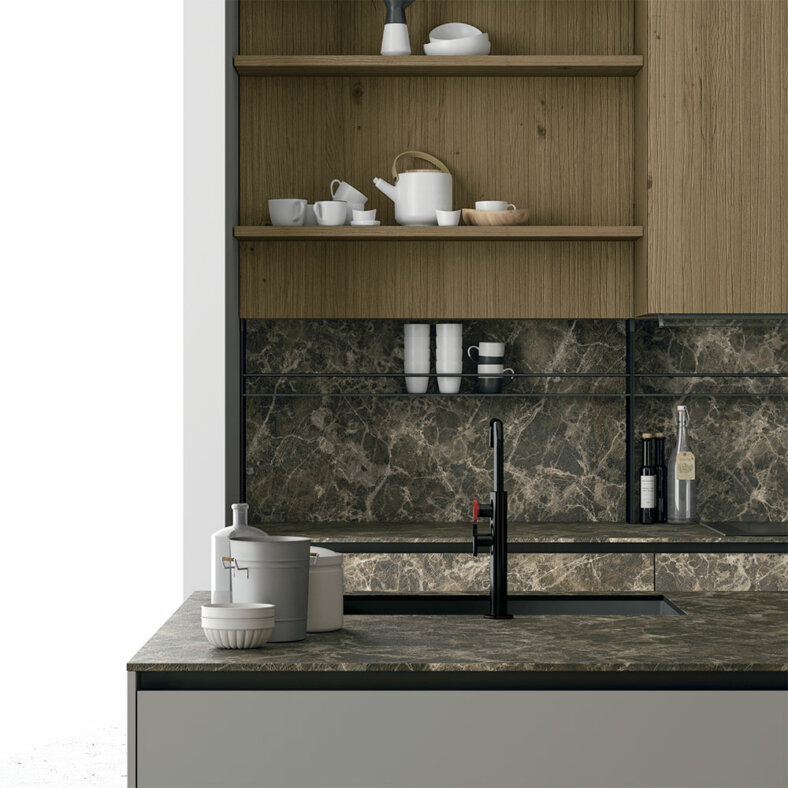Suggestions and guides
Fenix NTM® and NTA®
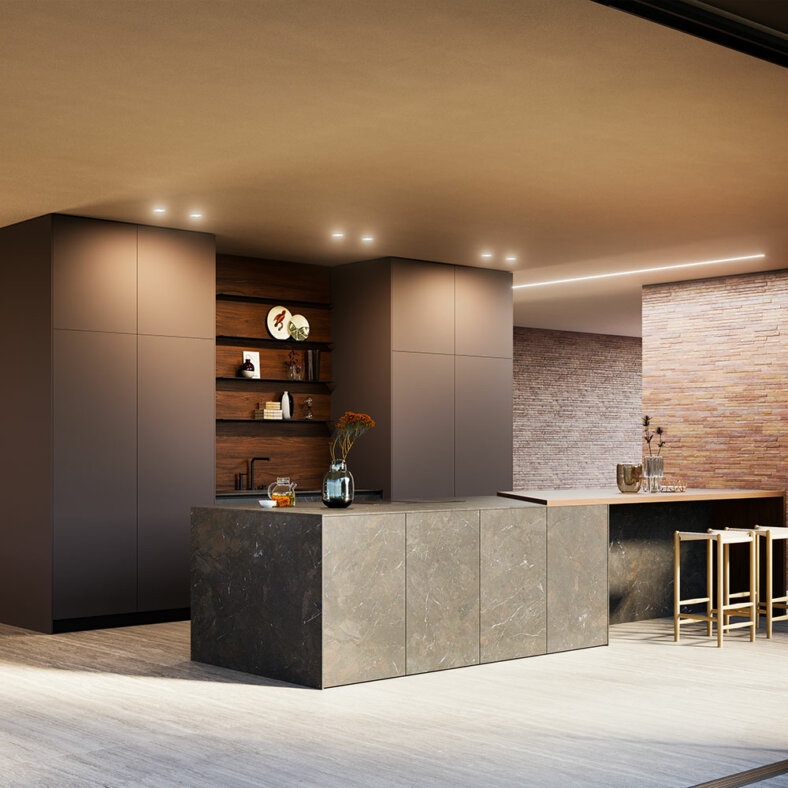
Technological, innovative and designer material
What is Fenix?
Fenix is a composite of cellulose and state-of-the-art resins. 70% of this material is made from layers of paper, the inner ones soaked in thermosetting resins and the outer ones in the latest generation of acrylic resins, all simultaneously subjected to heat and pressure. These processes were developed in the laboratory supported by the use of nanotechnologies that modify molecular structures at the scale of nanometres, or one millionth of a millimetre. The result is a homogenous and non-porous high-density product with unique characteristics.
Typologies: Fenix NTM® and Fenix NTA®
Fenix NTM®
Is an innovative material obtained using nanotechnologies. Its truly unique characteristic is its extremely matt surface, which reflects very small quantities of light. It is silky to the touch and above all allows for the repair of micro-scratches.
Fenix NTA®
Is the evolution of Fenix. It maintains all of the characteristics of the original material, beginning with its resistance to scratches and anti-fingerprint and soft touch, now applied to metal surfaces. A long-awaited innovation for lovers of steel and metal.
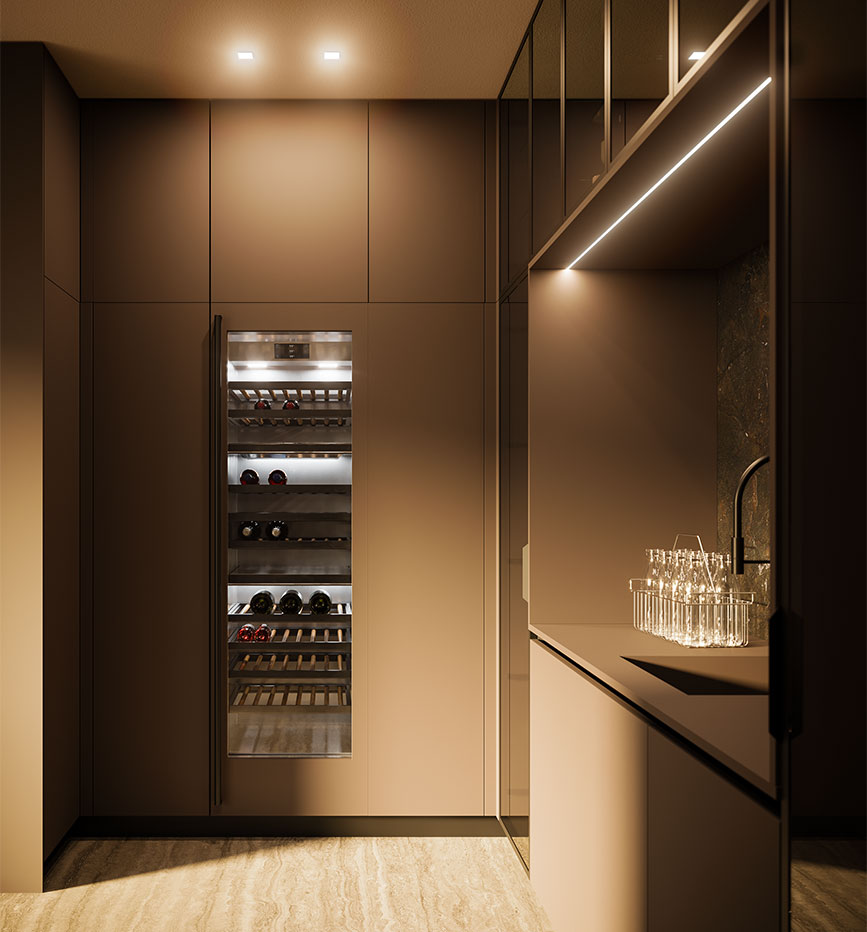
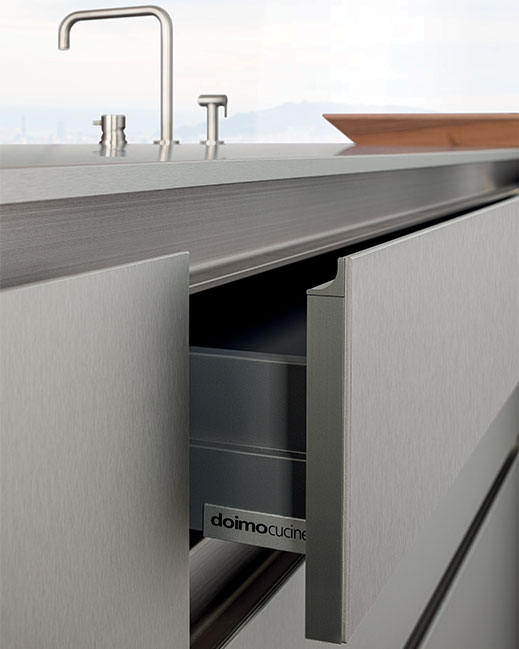
Characteristics of kitchens in Fenix
Nanotechnology treatments make Fenix surfaces, applied to unfinished panels with minimum formaldehyde emissions (Class E1, UNI EN 13986/2005):
- anti-fingerprint
- hygienic
- soft touch
- water-repellent
- resistant to impact and scratching
- resistant to solvents
- repairable in the event of micro-scratches
- bacteria-killing
- mould resistant
Kitchen panels in Fenix
Fenix kitchen panels are made from a base panel finished in an external layer of this innovative material. Depending on the collection, Doimo Cucine uses:
- Fenix applied to the external surfaces of particleboard panels and laminated to internal surfaces with coloured ABS edges
- panel in Stratificato HPL, internally composed of layers of cellulosic fibres, soaked in resin, and externally finished in layers of Fenix
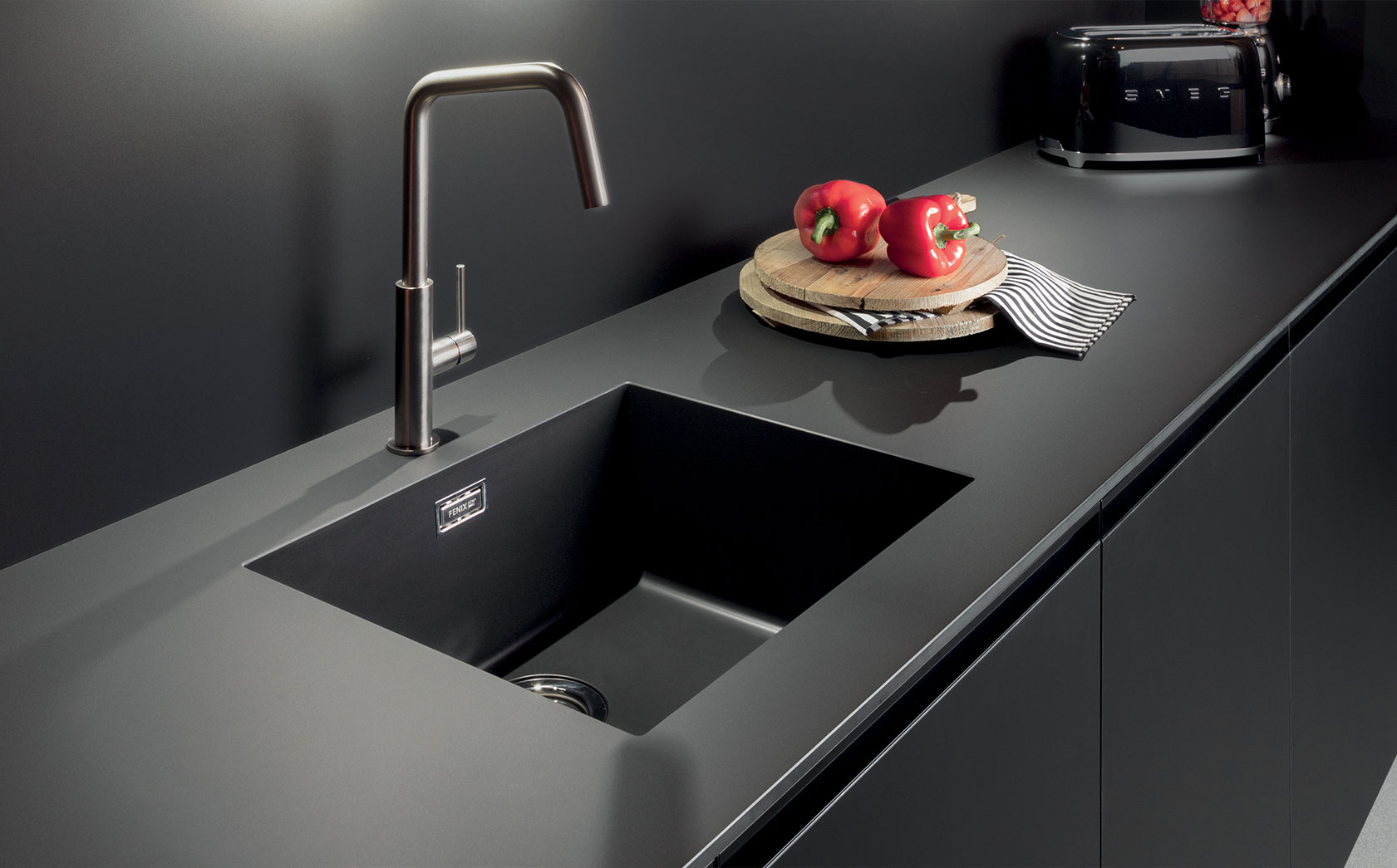
Fenix work tops
Fenix surfaced work tops are available in different thickness to meet the aesthetic needs of each single kitchen. Doimo Cucine, for example, uses particleboard panels surfaced with Fenix and with coloured ABS edges, a synthetic thermo-plastic resin, or a panel in highly resistant Stratificato HPL, composed of layers of cellulosic fibres, soaked in resin, and externally finished in layers of Fenix.
How to clean a kitchen in Fenix
Nanotechnologies help with the cleaning and maintenance of furnishings in Fenix. All that is required is a warm damp cloth with or without detergents. Fenix can be cleaned with all commonly available domestic detergents or disinfectants. For stubborn stains or marks, use a melamine foam sponge, also known as a magic eraser. When using a solvent, the cloth must be perfectly clean to avoid leaving halos, which can easily be removed by a quick rinse with hot water and a dry cloth.
Avoid the use of:
- abrasive sponges and scouring pads
- products containing abrasive creams or powder detersives
- products with high contents of acid or alkaline which can cause surface staining
- furniture polishers and detergents containing waxes that tend to form a sticky layer on the surface that attracts and holds dirt
- cutting with knives or using sharp utensils directly on the work surface
